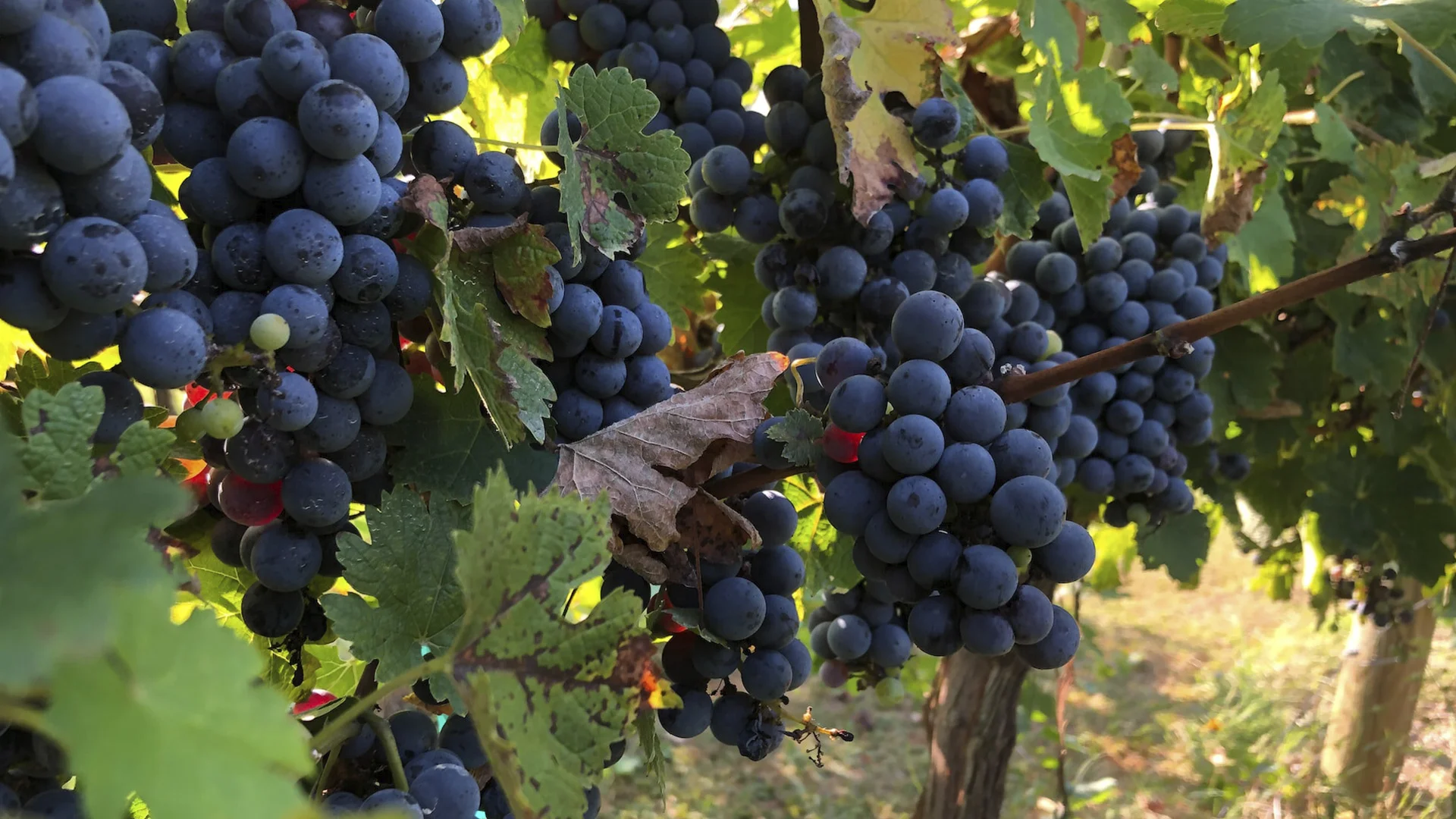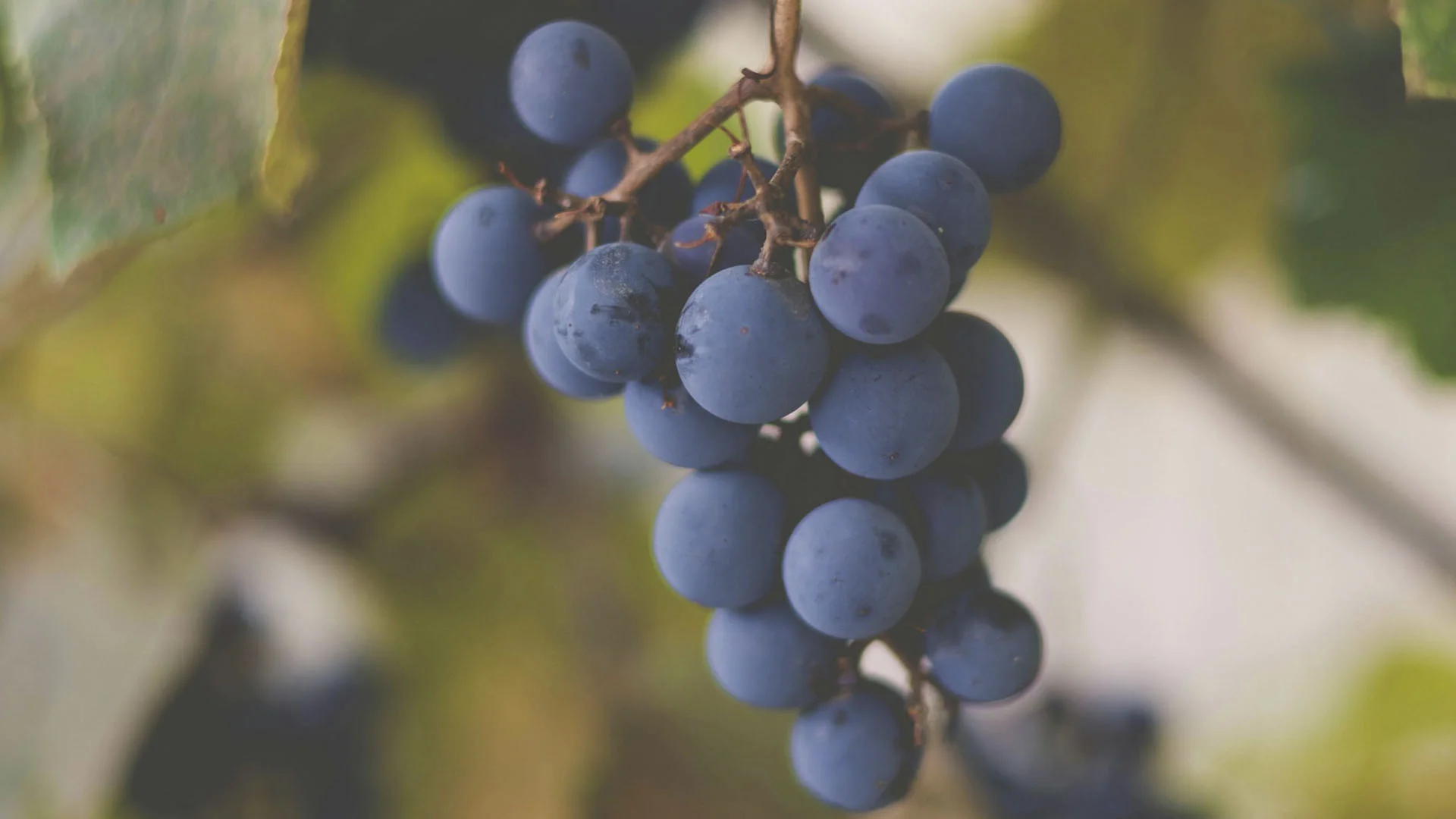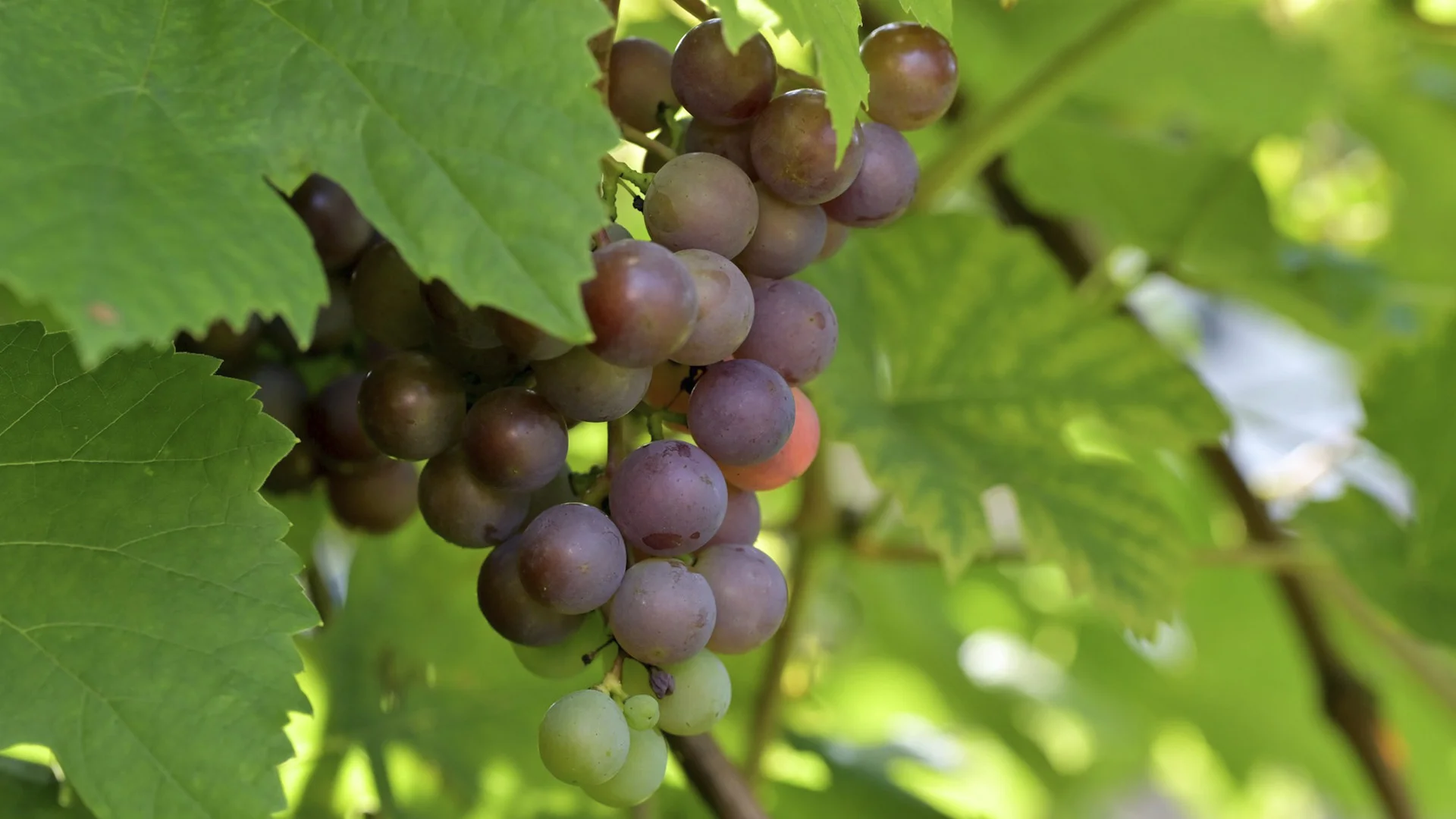
In the illustrious world of wine, few grapes can claim as revered a reputation as the Cabernet Sauvignon. Tracing its roots back to a serendipitous union in 17th-century Bordeaux between the Cabernet Franc and Sauvignon Blanc varieties, Cabernet Sauvignon is a tale of legacy, evolution, and indomitable presence. Its journey from the gravelly soils of Bordeaux to the rolling vineyards across the globe is a testament to its adaptability and the allure it holds for wine enthusiasts and producers alike.
The importance of the Cabernet Sauvignon grape within the wine industry is unparalleled. It forms the backbone of some of the world's most prestigious and sought-after red wines, notably those from Bordeaux's Left Bank and the Napa Valley in California. Its robust character, full-bodied flavors, and capacity to age gracefully have made it a favorite for both vineyard plantings and wine cellars. A wine that can be both approachable in its youth yet complex and multifaceted with age, Cabernet Sauvignon's significance is intertwined with the history and development of the global wine trade.
As we delve deeper into the story of this remarkable grape, we'll explore its ancient beginnings, its migration and adaptation across various terroirs, and its undeniable impact on the wine industry's tapestry, one vine at a time.
Cabernet Sauvignon is one of the world’s most recognized and highly acclaimed red grape varieties, often celebrated for its robust character and complexity. Originating from the Bordeaux region of France, this grape is now cultivated in various wine-producing regions globally due to its adaptability to diverse climates and terrains. Cabernet Sauvignon grapes are small, spherical, and have thick, dark blue-black skin. They are known for producing wines with high tannin levels and acidity, contributing to their longevity and aging potential. The grape yields wines with a deep red color, often exhibiting flavors and aromas of dark fruits like black currant, along with notes of bell pepper, mint, eucalyptus, and sometimes even chocolate or vanilla.
This grape variety flourishes in a wide range of climates, though it especially thrives in regions with well-drained soil and sufficient sunlight. It is resistant to various environmental stressors and diseases, making it a favored choice among vineyard owners and winemakers. Its hardy nature and ability to produce high-quality wines in different geographical locations have contributed to its widespread popularity and cultivation.
Cabernet Sauvignon wines tend to be full-bodied, with high tannins and noticeable acidity, which contribute to the wine’s aging potential. They are often enjoyed young but are also renowned for their capacity to evolve and develop new flavors and aromas over time, offering wine enthusiasts a dynamic and rewarding tasting experience.
Given its robust profile, Cabernet Sauvignon pairs well with hearty, flavorful dishes like red meats, game, and strong cheeses. Its structure and depth can balance the richness and fat content of such dishes, creating harmonious and delightful gastronomic combinations.
Over time, the grape has been planted extensively in various countries, including the United States (notably in California’s Napa Valley), Chile, Australia, and South Africa, among others. Each region imparts its unique terroir, influencing the grape’s expression and resulting in a spectrum of wines that reflect the diversity and richness of the world’s wine landscapes.
Winemakers employ various techniques to extract the best qualities from Cabernet Sauvignon grapes. Techniques like oak aging are common, which introduces additional flavors and helps soften the tannins. Decisions made during the winemaking process significantly affect the final product, highlighting the grape’s versatility and winemakers’ creativity.
Despite being such a widespread variety globally, many interesting facts about Cabernet Sauvignon are not so well known. Below, you will find five fun facts about this noble variety, which has transcended the limits of Burgundy to become one of the most widely planted varieties in the world.
The allure of the Cabernet Sauvignon wine starts long before the bottle, in the meticulous cultivation of its source – the grapevine itself. Recognizing the specific viticultural practices and challenges associated with this celebrated grape gives a deeper appreciation for the art and science behind each glass.
From its ancestral homeland in Bordeaux to emerging vineyards in newer wine regions, the spread of Cabernet Sauvignon is a testament to its universal appeal and adaptability. As we trace its roots and routes, it becomes evident how geography, culture, and history shape the grape's expression in diverse locales.
"Terroir," a French term, refers to the unique combination of soil, climate, topography, and even local traditions that influence the grape's growth and, consequently, the wine's character.

Harvesting is a pivotal phase in the winemaking process. Picking grapes at the right moment ensures that they reflect the desired balance of sugars, acids, and flavors, setting the stage for the final wine's character.
Every grape has its moment of perfection, a fleeting window where sugars, acids, and flavors unite in a harmonious blend, promising a wine of distinction. For Cabernet Sauvignon, renowned for its depth and complexity, this timing is particularly crucial. A culmination of the year's labors, the moment of harvest is both a science and an art, where observations, measurements, and intuition converge.
In an age of environmental awakening, the wine industry, too, has its role in fostering sustainable practices. The cultivation of the iconic Cabernet Sauvignon grape, while bringing pleasure to countless palates, also carries with it the weight of ecological responsibility. Let's delve into the environmental intricacies surrounding this celebrated grape.
As you indulge in the robust, full-bodied flavor of your cherished Cabernet Sauvignon, do you ever wonder about the devoted practices that contributed to your delightful experience? Sustainability is at the core of this, driving a positive impact not only on the environment but also on the quality of the wine gracing your palate.
Did you know that viticulture is one of the activities that contributes most to the growth of the carbon footprint? Fortunately,some wineries seekk to reduce their negative environmental impact through various sustainable practices. Below, you will learn about the most important ones:
Each bottle of Cabernet Sauvignon encapsulates not only rich flavors but also a commitment to energy efficiency and sustainability. The production process is meticulously designed to minimize energy consumption and carbon footprint, contributing to an eco-friendly wine experience for consumers.
Renewable energy sources play a pivotal role in this endeavor. Many vineyards and wineries have embraced solar panels and wind turbines to generate clean, sustainable power for their operations. These renewable sources provide a consistent supply of energy, reducing reliance on fossil fuels and mitigating greenhouse gas emissions.
Moreover, the adoption of energy-efficient technologies and equipment is a cornerstone of sustainable wine production. From energy-saving lighting systems to efficient machinery, every aspect of the production process is optimized to use less energy without sacrificing performance. This approach not only decreases operational costs but also significantly reduces the energy demand and carbon emissions associated with each bottle.
Additionally, contemporary wineries are often designed with energy conservation in mind. Features like insulated walls, energy-efficient windows, and intelligent systems are incorporated to manage and reduce energy consumption actively and efficiently. Every action counts to achieve a more efficient and environmentally friendly wine production!
Biodiversity within vineyards cultivating Cabernet Sauvignon is paramount for creating resilient, balanced ecosystems. The practice of fostering diverse plant and animal life contributes significantly to vineyard health and grape quality. By introducing cover crops, vineyards not only prevent soil erosion but also improve soil fertility. These plants act as natural pesticides, reducing the need for chemicals. Habitats for beneficial insects and wildlife are also created, promoting a natural balance and pest control system. This symbiotic relationship between vineyards and the environment results in Cabernet Sauvignon wines that are truly a reflection of their sustainable, biodiverse terroir.
The soil is a silent, potent factor influencing the taste, character, and quality of Cabernet Sauvignon, serving as the foundation of its rich flavor. The fertility and structure of the soil are paramount for the vine's growth, impacting the grapes’ development and the wine’s ultimate profile.
Vineyards dedicated to producing Cabernet Sauvignon often adopt sustainable practices to preserve and enhance soil health. Composting, a technique used widely, involves using organic matter to enrich the soil, providing essential nutrients that vines require to thrive. This practice not only improves soil fertility but also its structure and ability to retain water, fostering robust, resilient grapevines.
Reduced tillage is another vital practice, minimizing soil disruption and erosion while maintaining its structure and composition. It also aids in preserving the indigenous microbiome of the soil, a crucial aspect influencing the terroir and, consequently, the wine’s taste. Through these methods, vineyards create a nurturing environment where vines can grow healthily and sustainably.
Soil health isn’t just vital for the present. It’s an investment in the vineyard's future productivity and longevity, ensuring that the land can continue to yield high-quality Cabernet Sauvignon grapes for generations to come. When you enjoy a glass of Cabernet Sauvignon, remember that the depth and complexity of its flavor start from the ground up, with healthy, well-tended soil
Embracing a zero-waste philosophy, vineyards producing Cabernet Sauvignon are committed to minimizing waste at every production stage. From the vine to the bottle, waste reduction practices, including recycling and composting, are diligently implemented. These initiatives not only diminish waste but also contribute to creating nutrient-rich soil, fostering healthier vine growth. Additionally,by adopting a circular economy mindset, vineyards repurpose waste materials, further reducing their environmental impact. Each bottle of Cabernet Sauvignon you enjoy is a testament to these conscientious efforts, encapsulating a vision of sustainability and respect for the environment in pursuit of exquisite flavor.
Cabernet Sauvignon vineyards actively engage in climate change mitigation and adaptation. These vineyards employ innovative practices to lessen greenhouse gas emissions, thereby contributing to global climate change efforts. Through careful monitoring and adaptation to changing weather patterns, they ensure the resilience and sustainability of the grape crop. Their commitment to carbon sequestration practices further solidifies their dedication to a healthier planet. This vigilant approach results in the production of wines that are not only delightful but also represent a commitment to safeguarding our environment for current and future generations.
Certifications on Cabernet Sauvignon bottles are more than just seals; they embody commitments to sustainability, quality, and ethical practices. These benchmarks help consumers make informed, environmentally responsible choices, endorsing wines that align with their values.
Various certifications exist, each with unique standards and focus. Recognizable ones, like USDA Organic, Demeter, or Fair Trade, assure consumers that the products meet stringent environmental and social standards. Through understanding these certifications, consumers can actively support vineyards and wineries dedicated to sustainable practices.
And here's where you can help to make the world of wine more sustainable. When you choose certified Cabernet Sauvignon, it signals market support for sustainability, urging more producers to embrace these practices. This not only safeguards the industry for the present generation but also ensures its thriving future. Engage beyond purchases by following sustainable wine brands, participating in community events, or joining educational programs they offer. Such active engagement allows you to appreciate the sustainability efforts and practices, enhancing your connection and commitment to the brands you support. Remember: Your purchasing choices are powerful
Ultimately, choosing certified wines allows consumers to be part of a larger movement, one that values the environment, quality, and community while enjoying exquisite wines that represent these principles.
Did you know that it usually takes 109 liters of water to produce one glass of wine? That is far too much, especially if we take into account that water is a non-renewable resource. However, you should know thatsome wineries aree trying to change this situation by implementing various strategies. Knowing about them will allow you to give them more support. Some of the strategies used by these wineries are:
Cabernet Sauvignon has produced some of the world’s most revered and collectible wines, hailing from various renowned wine regions. Below are some iconic examples:
Penfolds Bin 707: As one of Australia’s foremost Cabernet Sauvignon wines, Bin 707 reflects Penfolds' and South Australia’s solid lineage of the varietal. It's a global standard-bearer for Australian Cabernet, known for its structure and concentration.
Sassicaia: While Italy isn’t traditionally known for Cabernet Sauvignon, Sassicaia, from the Bolgheri region in Tuscany, has made waves in the wine world. It’s a blend of Cabernet Sauvignon and Cabernet Franc, known for its elegance, aging potential, and savory character.
As we reach the end of our journey exploring the rich tapestry of the Cabernet Sauvignon grape, it's clear why this variety stands as a titan in the wine realm. From its deep-rooted history in Bordeaux to its vibrant expressions in New World vineyards, Cabernet Sauvignon continues to enchant wine enthusiasts across the globe.
Its growth patterns, preferred climates, and vine characteristics make it a challenging yet rewarding grape for vintners. The meticulous timing of harvesting, influenced by both nature's cues and a winemaker's intuition, showcases the depth of expertise and care required in its cultivation. Furthermore, the ongoing dialogues about sustainability, from water conservation to organic farming, reflect the industry's commitment to evolving in harmony with the environment.
Understanding the influence of terroir, the delicate dance between Old World tradition and New World innovation, and the profound impact of viticultural practices offers a newfound appreciation for every bottle of Cabernet Sauvignon. This grape, with its robust character and adaptability, not only mirrors the complexities of nature but also encapsulates the passion and dedication of those who cultivate it.
To sip on a Cabernet Sauvignon is to partake in a legacy — a blend of history, culture, innovation, and nature's bounty. As we raise our glasses to this iconic grape, we're not just celebrating a wine but an intricate saga of land, love, and labor.
Do you want to start your own Cabernet Sauvignon wine brand? Then this article about Wine Branding will be of great help!
.webp)

.webp)





















Are you interested in
collaborating with us?